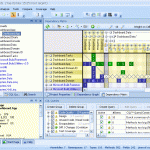The Number 10 petitions website says they’ll usually forward on a petition to the relevant department once it has 500 signatories. We’re currently 176 signatures short of that total so if you haven’t already bothered everyone you know to sign it please do.
If you need some encouragement I read on only Monday that the government is yet still trying to commit to another load of juicy big fat contracts for the NHS IT scheme (NPfIT). It was reported on BBC News here. This revelation came from an excellent Radio 4 documentary the previous night about the government’s IT failures which you can still listen to on the BBC iPlayer. Here are some soundbites:
- £622 million pounds was wasted on the Rural Payments Scheme project according to Edward Leigh, head of the Commons Public Accounts committee. Some farmers actually committed suicide because they didn’t get the money they needed and Mr Leigh calculated it would have been more effective to have written a cheque for £20-30,000 to each and every farmer in the country rather than have built the IT system in the first place.
- 100 Accenture “experts” were employed on the Rural Payments Scheme at an average salary of £200,000 (! – at that kind of money I think I’m about ready to sell my soul and go work with Tiger).
- 9 fire brigade control centres costing £1 million a month are lying empty due to the late delivery (3.5 years and counting) of their new IT system. At current (vague) estimates it won’t be ready until at least 2011 and is running £300 million over budget.
What strikes me here is that it’s not just all the money that’s being wasted, but the human effect these huge failures are having. Organisations are told to prepare themselves for new IT systems which don’t arrive or work as they need to, leaving them unable to do their jobs at all. It is tragic that in some cases this has led to real misery and even worse.
In other news we got a bit of press coverage in Computing.co.uk
What else can I do?
Contact Edward Leigh, head of the Commons Public Accounts committee who has reviewed many of the disastrous IT project and would no doubt be interested in your views.
Contact your MP and let them know how you feel about all your money being wasted.
If anyone has any good ideas on how we can either get more publicity for the petition or the cause itself, please get in touch.
That is all for now.



